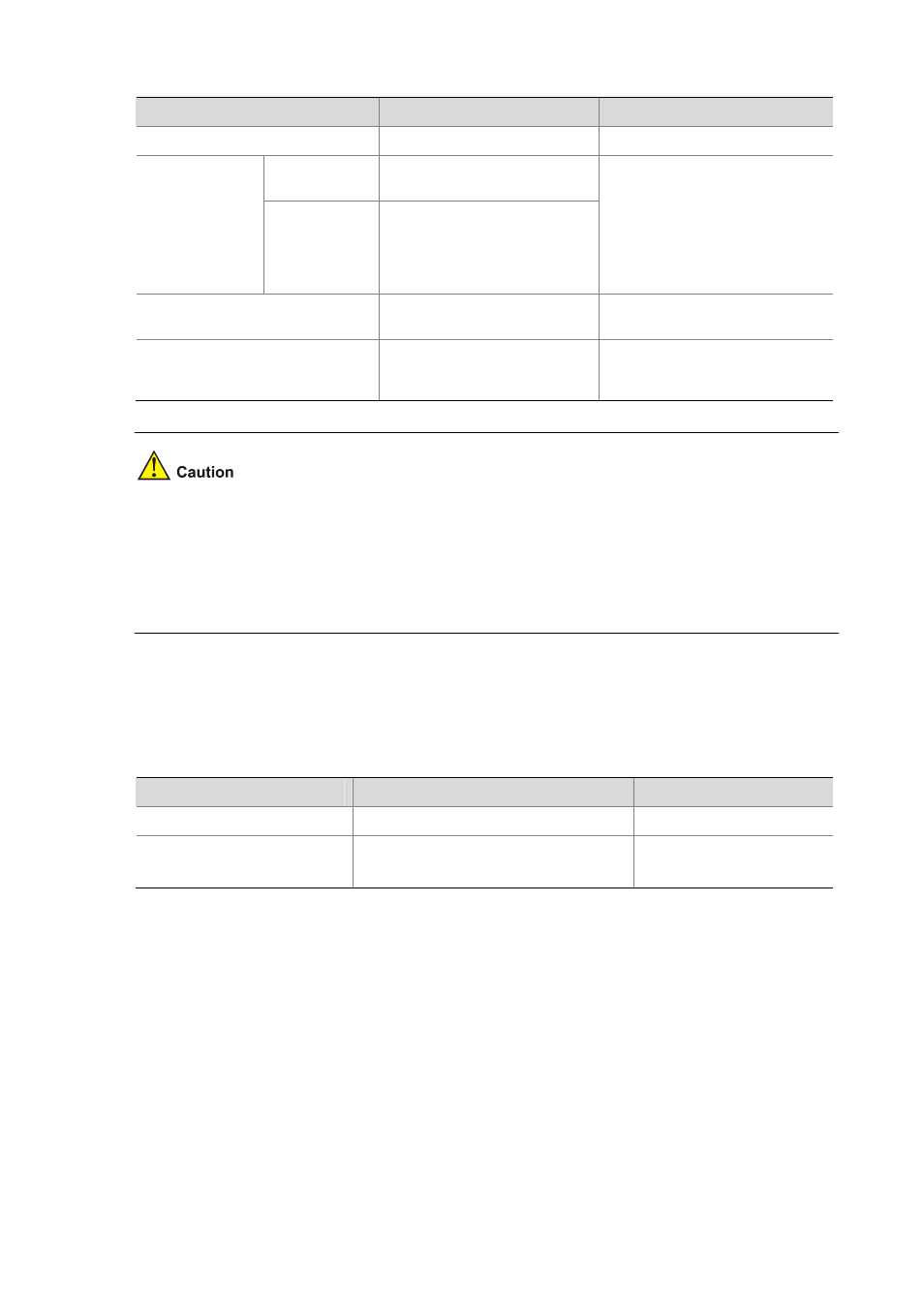Qinq configuration example, Network requirements – H3C Technologies H3C WX6000 Series Access Controllers User Manual
Page 104

12-5
To do...
Use the command...
Remarks
Enter system view
system-view
—
Enter Ethernet
port view
interface interface-type
interface-number
Enter Ethernet
port view or port
group view
Enter port
group view
port-group
{ manual
port-group-name | aggregation
agg-id
}
Required
Use either command.
Configurations made in Ethernet
port view will take effect on the
current port only; configurations
made in port group view will take
effect on all ports in the port group.
Enter QinQ view and configure the
outer VLAN tag for the port to add
qinq vid vlan-id
Required
Configure inner VLAN tags
corresponding to the outer VLAN
tags
raw-vlan-id inbound
{ all |
vlan-id-list
}
Required
z
An inner VLAN tag corresponds to only one outer VLAN tag. If you want to change an outer VLAN
tag, you must delete the old outer VLAN tag configuration and configure a new outer VLAN tag.
z
You can configure selective QinQ and basic QinQ on the same port. The switch uses the basic
QinQ function to attach the port’s default VLAN tag as the outer tag to frames that do not match the
selective QinQ mapping rule.
Configuring the TPID Value to Be Carried in VLAN Tags
You can configure the TPID value to be carried in a VLAN tag TPID globally (configuration will take
effect on all ports of the device).
To do...
Use the command...
Remarks
Enter system view
system-view
—
Configure the TPID value to be
carried in VLAN tags
qinq ethernet-type
{ customer-tag |
service-tag
} hex-value
Optional
Both 0x8100 by default
QinQ Configuration Example
Network requirements
z
Provider A and Provider B are service provider network access devices.
z
Customer A, Customer B and Customer C are customer network access devices.
z
Provider A and Provider B are interconnected through a configured trunk port. Provider A belongs
to VLAN 1000 of the service provider network, and Provider B belongs to VLAN 2000 of the service
provider network.
z
Third-party devices are deployed between Provider A and Provider B, with a TPID value of 0x8200.
After configuration, the network should satisfy the following requirement: